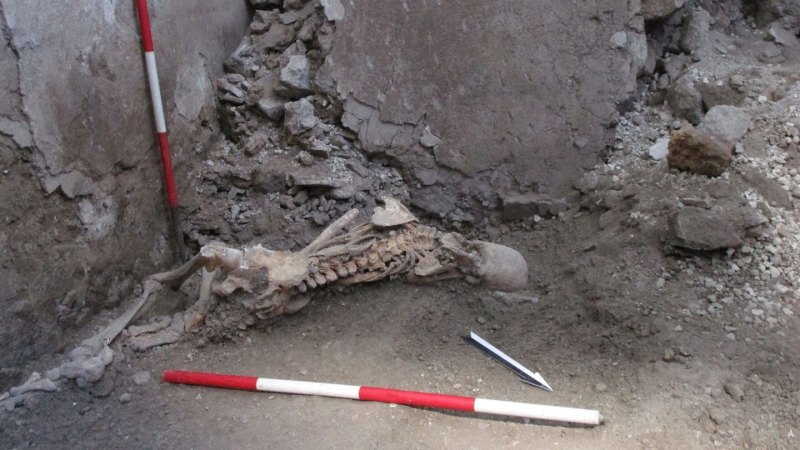
Extreme Climate Survey
Scientific news is collecting questions from readers about how to navigate our planet’s changing climate.
What do you want to know about extreme heat and how it can lead to extreme weather events?
In the new analysis, Sparise and colleagues studied the collapsed buildings in Pompeii, as well as the skeletons of two people found inside one such building. The observed injuries to individuals are similar to injuries caused by collapsing buildings during modern earthquakes, the team reports.
The eruption of Mount Vesuvius nearly 2,000 years ago spewed dense clouds of superheated gases, ash and rock into the stratosphere – a suffocating, scorching mixture that quickly fell back to Earth and blanketed nearby Roman cities. Adding to the destruction, the volcano also sent pyroclastic flows, dense jets of gas and hot rock, hurtling down its slopes toward the towns closest to its feet.
An eyewitness to the event, Pliny the Younger, described the eruption in a series of letters from his vantage point at Misenum, across the Bay of Naples from the volcano. In one letter, he wrote of the “quakings of the earth” felt at Misenum that became “so violent that everything seemed to shake and turn.”
Such strong seismic shocks caused by the force of the explosion, Sparise says, may have forced the inhabitants of Pompeii to make a deadly choice: seek shelter from the blast inside buildings made unstable by the powerful earthquakes or flee outside. in the burning ashes.
To learn more about what role earthquakes may have played in the death toll, Sparise and colleagues turned to two newly excavated rooms in a house found in an area of Pompeii known as the Insula of the Chaste Lovers. The walls were decorated with unfinished frescoes, while piles of mortar were found leaning against the garden walls and resting on the kitchen counter. Vesuvius had apparently interrupted the renovation of the building.
The two people found in the house were both male and about 50 years old when they died. Their skeletons lay next to large blocks of masonry – the remains of a collapsed partition wall. Multiple rib fractures, as well as severe fractures to the bones of the pelvis, arm and face, suggest that the men experienced strong crushing forces. A man was crouching on his left side, his left hand shielding his head, as if trying to cover himself.
Taken together, this evidence suggests that the men sheltered and survived the initial hot shower of gas and ash, which lasted about 18 hours. Some of the ash seeped into the house, possibly through cracks in the doors and windows. But the pieces of the wall rest on top of that ash, rather than below it. Sparis’ team hypothesizes that after the ash fall subsided, the ground shook violently — earthquakes strong enough to destroy the house’s partition walls and crush the men.
Those killer earthquakes may have been the result of the collapse of the volcano’s central crater, or caldera, the team says, which heralded the start of the volcano’s final, deadliest phase. Pyroclastic flows of hot gas, ash and molten rock then engulfed the region, burying Pompeii under a layer of sediment 1.8 meters thick.
The finds confirm “what archaeologists have assumed was reality,” in part because of Pliny the Younger’s account, says archaeologist Kevin Dicus of the University of Oregon in Eugene. “I appreciate the evidence-based approach – it moves us away from the assumption that earthquake tremors were just as devastating at Pompeii to provide a methodology to measure this theory.”
The analysis also “gives us a better picture of what people in Pompeii went through that day and why some people chose to stay and see it out,” says Dicus. “It was already a hellish landscape outside. The ash cloud turned day into night, raining rock and ash on them. Now we can add a rock solid earth to the mix.”
Such studies also help revise the picture of who was trapped by the blast, Dicus adds. Scientists once thought that it was mainly the elderly, the infirm or the enslaved who could not escape destruction. “We are beginning to realize that a true cross-section of the population is represented in bones and body casts.”
#Earthquakes #added #Pompeiis #death #toll
Image Source : www.sciencenews.org